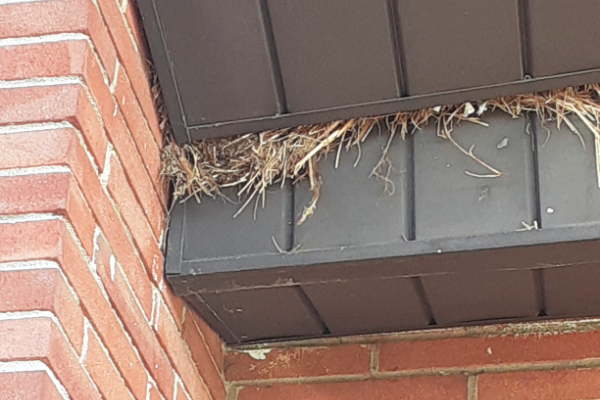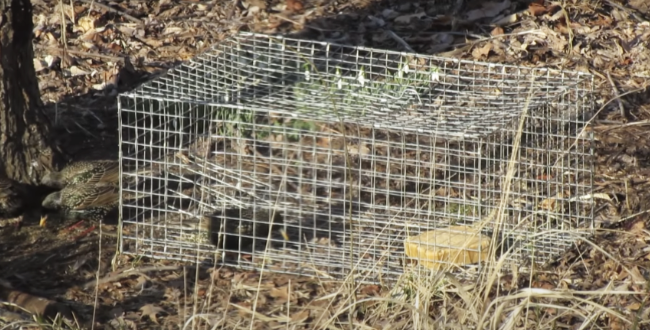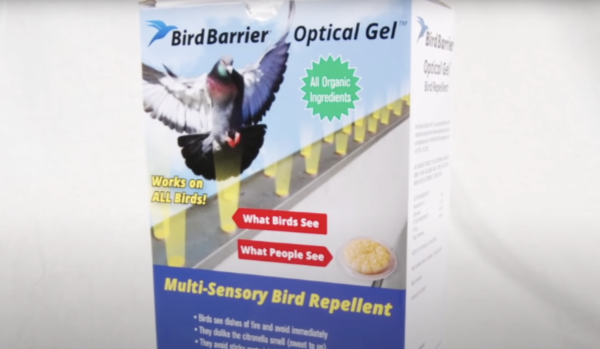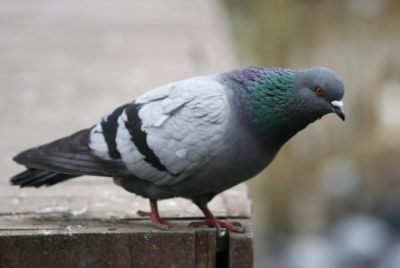Starling Removal and Control
Starlings are combative birds that drive other songbirds from the surrounding area. Yearly, a pair of birds can raise a maximum of 3 broods of four or five young birds.
Towards the end of summer, starlings can gather in huge flocks and cause great damage to crops within some days. But, when dealing with man, starlings become cautious yet they are tough and strong.
Starlings are not easily chased away. When harassed, they circle before landing again. Continuous harassments make them relocate to another site that seems peaceful to them.
Starlings like large trees that are old and dead. As a safety measure against hawks that can attack them, they usually keep away from areas with heavy trees.
How are Starlings Harmful?

Massive accumulation of feces from the starlings can cause structural damage and slip and fall hazards. The uric acid present in the feces can corrode metals, stones, and masonry. It also causes damage in paints, canvas canopies, and plastics among others.
Starling nests clog drainage pipes and gutters leading to extensive damage of a house. Exhaust ductwork and vents where starlings like building their nests can cause fire hazards and indoor air quality problems.
Starlings pose a threat to airplanes. Starling makes the production of swine and cattle expensive by eating supplements rich in proteins that are added to the feeds. They also spread viruses amid the livestock facilities.
In the agricultural sector, starlings eat and cause damage to crops. This leads to losses among the farmers.
Starling Removal
To totally and permanently remove starlings, you may need a long-term management plan that contains a number of products and approaches towards the problem. Common products for starling removal are:
- Bird-shock flex –track
- Bird slide
- Eagle eye
- Bird-Gard
- Bird-Gard
- Optical Gel
- Stealthnet
- Starling traps
Starling Traps

This is mainly used after all trying all other solutions without success. Bird barrier is a type of deterrent that is designed to make starlings fly inside until a time that you let them go into another location. Bait starlings trap usually have foods like seeds that starlings eat. There is also an option for making water and shade available within the trap.
The federal law does not offer protection for the starlings and the state laws involved with the care of starlings also vary. So, before trapping them, consult your local wildlife agency first.
Starling Deterrents: Audio, Visual, and other Repellents
For agricultural applications or large flocks, starlings can be prevented by a scare campaign that is well-timed using well advanced visual or audio deterrents and repellents that irritate other senses of starlings. Some of the options are:
Optical gel

This is a humane visual and audio product control that hinders starlings from roosting or landing on signs, ledges, balconies, and other enclosed places by harming them. The optical gel works by making starlings think that they are seeing either fire or smoke, while still producing peppermint oil scent. For sites where mechanical deterrents can’t be applied, an optical gel is the best option.
Bird-Gard
It is an electronic audio repeller capable of being programmed that is a good solution for dispersing starlings that have flocked together in small areas. Bird-Gard controls starlings by producing predator calls and distress signals that scare away the starlings.
Avian control
This is a large-scale starling repellent that is used in wooded areas, grassy fields, airplane hangars, large properties, or golf courses. It behaves like an irritant, preventing starlings from gathering together without causing harm to humans, birds, household pets, or livestock. It is applied through spraying or fogging.
Starling Control
The first step of controlling starlings is removing away all seeds that you have allocated outside for other birds. Starlings do not feed on sunflower seeds, so, you can also replace other seeds with those of sunflowers.
Cover composite piles and garbage. Lock up all grains from the reach of starlings. Starlings also like building their nests in the roof cracks and gutters. Therefore, seal those cracks once you notice them.
Instead of building round holes for your birds, which starlings also like, modify the house to take the shape of crescent openings, as it discourages starlings. Sadly, scare tactics are not effective in controlling starlings.
Other temporary control measures are the use of cats and dogs. However, cats are likely to be scared and threatened by these birds. Dogs are also quick to lose interest. So, you can’t fully rely on them as a better choice of harassing starlings.
Shooting is another option of controlling starlings. Unfortunately, this method is illegal in some areas and is also time-consuming. The use of poison is not advised. So far, there are no poisons that have been approved for use in songbirds. Although loud sounds can be an effective method, it may be inappropriate in certain areas, especially in urban ones.

